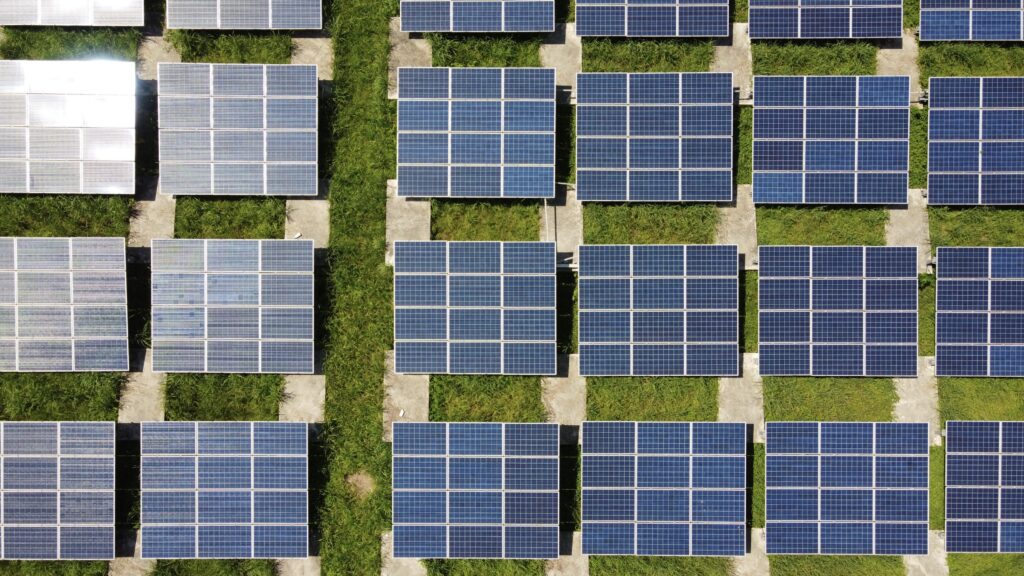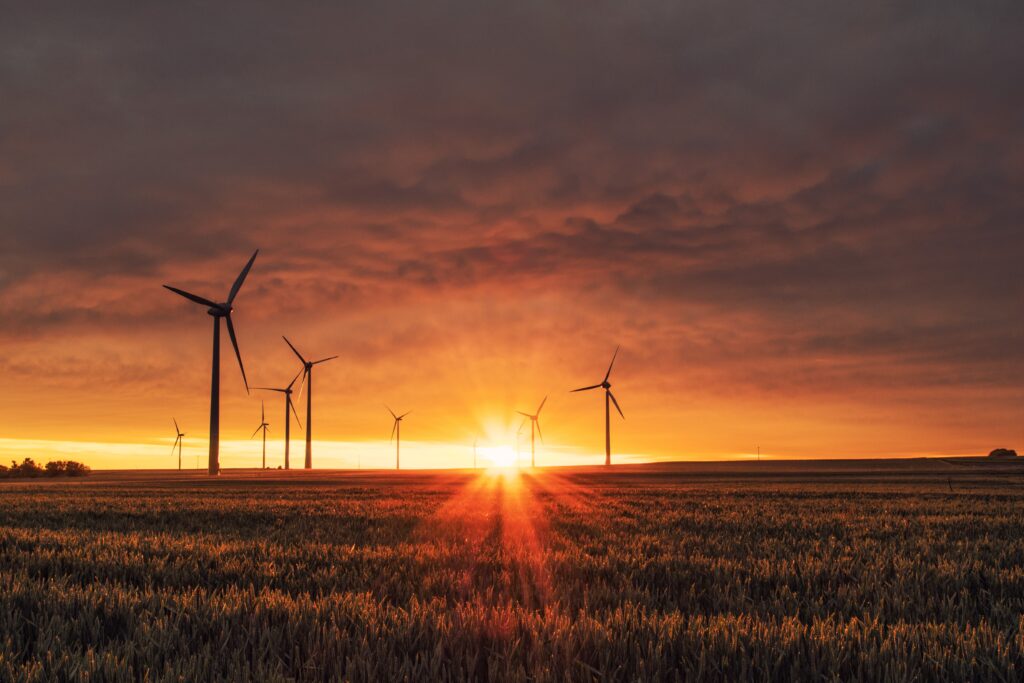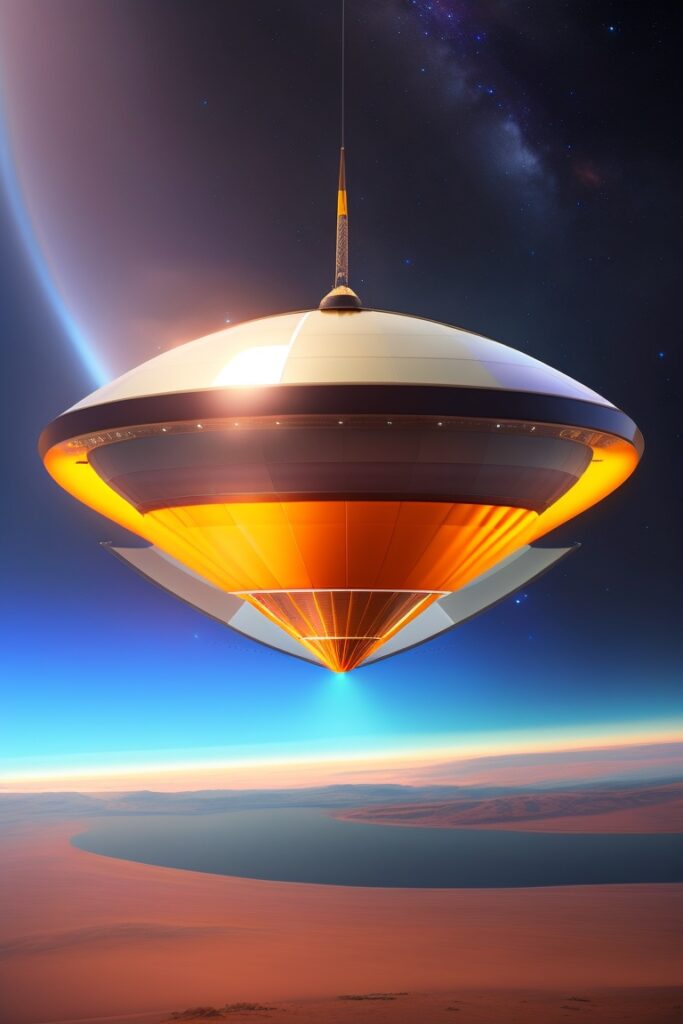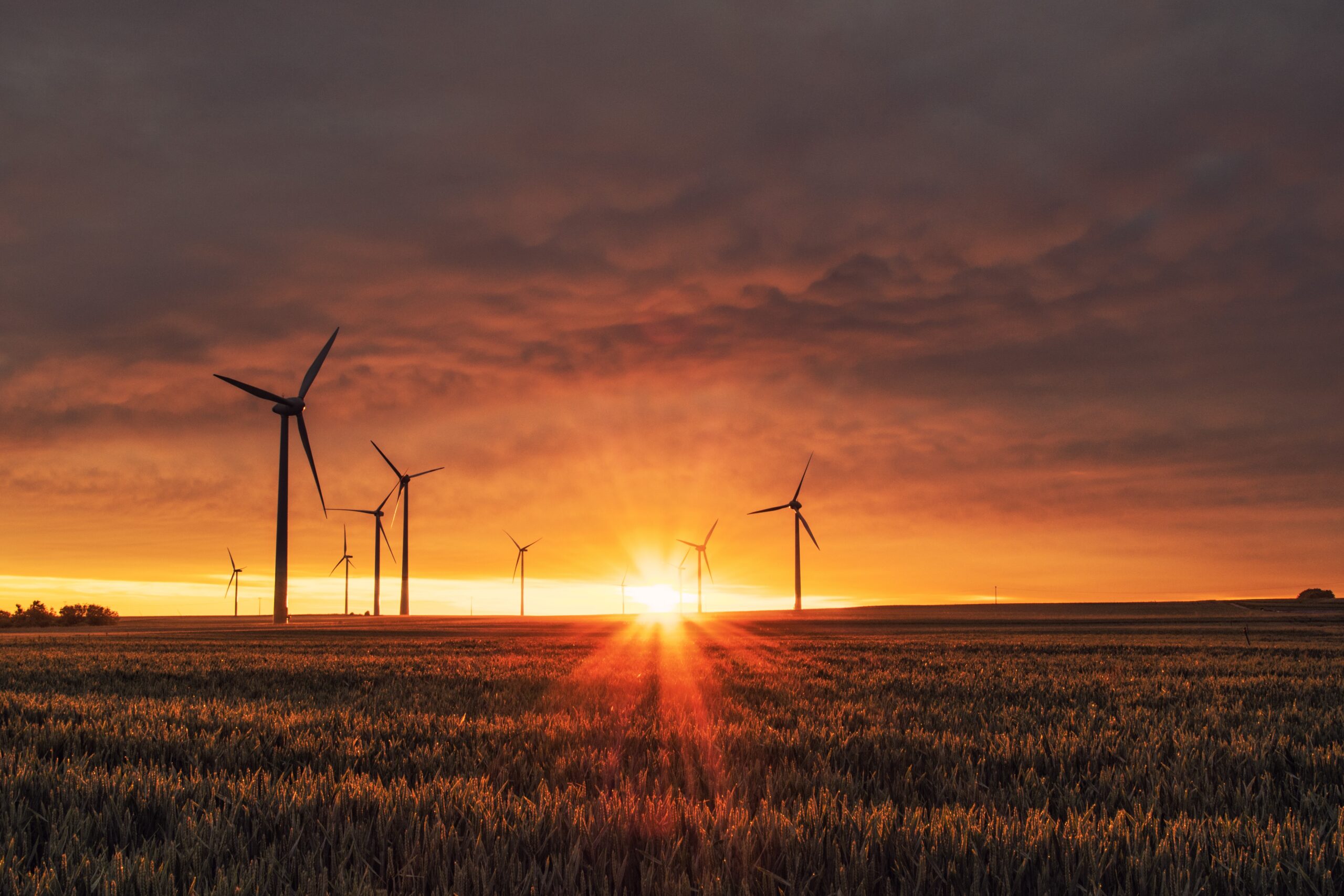What Are The Main Sources Of Renewable Energy: Introduction
Have you ever wondered what are the main sources of renewable energy? Look no further! In this article, we will explore the different sources that contribute to sustainable power generation. From solar and wind energy to biomass and hydroelectric power, we will shed light on these renewable sources and uncover their immense potential in tackling climate change.
So, let’s dive in and discover the wonders of renewable energy! Renewable energy is becoming increasingly important as we strive to transition to a more sustainable and environmentally friendly energy system. There are several main sources of renewable energy, each with its own unique benefits and applications. In this article, we will explore these sources in detail and learn how they can contribute to a greener future.
Historical Background of Renewable Energy: From Fire to Photovoltaic Cells
When we ponder the question, “What are the main sources of renewable energy?” it’s crucial to acknowledge the historical journey. Long before we had solar panels and wind turbines, our ancestors harnessed wind for sailing and water for milling. Fast forward to the 19th century, and we witness the beginnings of modern hydroelectricity and solar power concepts. From early windmills in Persia to water wheels in ancient Greece, renewable energy has a rich history that laid the groundwork for today’s sustainable solutions.
Solar Energy
Solar energy is one of the most abundant and widely available sources of renewable energy. It harnesses the power of the sun to generate electricity and heat. There are two main types of solar energy technologies: photovoltaic (PV) solar cells and solar thermal power plants.
Photovoltaic (PV) Solar Cells
PV solar cells are perhaps the most recognizable form of solar energy. They are made up of semiconductors, usually silicon, that absorb sunlight and convert it into electricity. PV cells are often used to power individual homes and businesses, as well as larger-scale solar farms.
The beauty of PV solar cells is that they can be installed on rooftops or any available space, making them highly versatile. Additionally, they operate silently and require little maintenance, making them an attractive option for both residential and commercial use.
Solar Thermal Power Plants
Solar thermal power plants, on the other hand, use the sun’s heat to generate electricity. These plants concentrate sunlight using mirrors or lenses onto a fluid-filled pipe, causing the fluid to heat up and produce steam. The steam then drives a turbine, which generates electricity.
Solar thermal power plants are typically built in sunny regions, as they require high levels of direct sunlight. They are most commonly used in large-scale energy production and are a promising solution for reducing greenhouse gas emissions.

Check Out Our Top Eco Friendly Product Picks On Amazon Here
Wind Energy
Wind energy harnesses the power of the wind to generate electricity. It is an incredibly reliable and renewable source of energy, as wind is always present in some form or another. There are two main types of wind turbines: onshore and offshore.
Onshore Wind Turbines
Onshore wind turbines are the most commonly seen form of wind energy. They consist of large towers with multiple blades that convert the kinetic energy of the wind into mechanical energy. This mechanical energy is then used to generate electricity.
Onshore wind turbines are typically found in open areas with consistent wind patterns. They have the advantage of being relatively inexpensive and easy to install. Moreover, they can be integrated into agricultural or rural landscapes without causing significant disruptions.
Offshore Wind Turbines
Offshore wind turbines are situated in bodies of water, usually in coastal areas or out at sea. They take advantage of stronger and more consistent winds found in these locations, resulting in higher energy production compared to onshore turbines.
While offshore wind farms require more substantial upfront investments and face some logistical challenges, they offer significant benefits. They can be built further away from populated areas, minimizing any potential visual or noise concerns. Additionally, their maximum energy generation potential is higher due to the stronger and more consistent offshore winds.

Hydropower
Hydropower is the generation of electricity through the use of flowing water. It is one of the oldest and most established renewable energy sources. Hydropower can be categorized into three main types: reservoir hydropower, run-of-river hydropower, and pumped storage hydropower.
Reservoir Hydropower
Reservoir hydropower, also known as conventional hydropower, is the most common form of hydropower. It involves constructing a dam on a river, and creating an artificial lake or reservoir. The water stored in the reservoir is then released through turbines, which convert its kinetic energy into electricity.
Reservoir hydropower provides a reliable and consistent source of electricity, as the stored water can be released as needed. It is often used for large-scale energy production and can also offer additional benefits such as flood control and irrigation.
Run-of-river Hydropower
Run-of-river hydropower systems do not require the construction of a dam or reservoir. Instead, they use the natural flow of a river to generate electricity. A portion of the river’s flow is diverted through a penstock, which carries the water to a turbine. The turbine spins, generating electricity.
Run-of-river hydropower is considered more environmentally friendly than reservoir hydropower, as it has a smaller ecological footprint. It allows for the continuous flow of water downstream, maintaining the natural ecosystem. These systems are often used in areas with a steady flow of water and are well-suited for decentralized energy production.
Pumped Storage Hydropower
Pumped storage hydropower is a fascinating technology that combines hydropower and energy storage. It involves two reservoirs placed at different elevations. During periods of low electricity demand, excess electricity is used to pump water from the lower reservoir to the upper one. When electricity demand is high, the water is released back to the lower reservoir through turbines, generating electricity.
Pumped storage hydropower provides an important energy storage solution, as the stored water can be used to generate electricity during peak demand periods. It helps stabilize the electricity grid and maintain a consistent supply of power.
Geothermal Energy: The Earth’s Core Power
When talking about “What are the main sources of renewable energy,” geothermal often flies under the radar. But don’t underestimate it. This energy is harnessed from the Earth’s own heat. Think of the Earth as a giant, naturally occurring battery. In specific geographic areas like Iceland and parts of the United States, geothermal plants tap into this natural heat to generate electricity and even to heat buildings directly. Plus, it’s sustainable and emits minimal greenhouse gases.
Biomass and Bioenergy: From Trash to Treasure
Another gem in our renewable energy treasure chest is biomass. This form of energy production involves converting organic materials—think agricultural wastes, wood, and even garbage—into fuel. It’s literally turning trash into treasure! While not completely without environmental impact, when managed properly, biomass can be a sustainable and carbon-neutral energy source.
Ocean Energy: Waves and Tides
Ever stood by the ocean and felt the sheer power of waves and tides? Well, ocean energy aims to capture that in a bottle—or rather, in a turbine. Though not as widespread as other forms of renewable energy, ocean power holds immense untapped potential. However, the technology is still in its infancy, and scalability remains a challenge.
Renewable Energy and Climate Change: A Green Knight in Shining Armor
When considering “What are the main sources of renewable energy?” don’t forget the environmental impact. Renewable energy is our best bet in the battle against climate change. Unlike fossil fuels, renewable energy sources like solar, wind, and hydro emit zero greenhouse gases when generating electricity. This can significantly reduce our carbon footprint and combat global warming.
Economic Factors: The Cost of Going Green
Sure, renewable energy sounds fantastic, but what’s the price tag? Initially, the setup costs for renewable energy projects can be high. But long-term, they often turn out to be more economical than fossil fuels, especially when you factor in government subsidies and the plummeting cost of technologies like solar panels. In short, the sun and the wind are free, but the tech to harness them isn’t—yet.
Social and Political Implications: The Winds of Change
Renewable energy isn’t just an economic or environmental issue; it’s a social and political one too. As nations transition away from fossil fuels, entire industries and job markets will shift. Plus, energy independence can be a strategic advantage for many countries, reducing geopolitical tensions linked to oil-rich regions.
Renewable Energy in Developing Countries: Leapfrogging to Sustainability
So, “What are the main sources of renewable energy” for countries that are still developing? For these nations, renewable energy offers a chance to leapfrog over the fossil fuel stage directly into cleaner, more sustainable energy solutions. With the right investment and infrastructure, renewable energy can be a game-changer in elevating living standards and fostering economic growth.
What Are The Main Sources Of Renewable Energy: Common Myths and Misconceptions
Renewable Energy is Too Expensive
One of the most pervasive myths is that renewable energy will break the bank. Sure, initial setup costs can be high, but the long-term savings are substantial. For example, solar panels often pay for themselves within 5 to 10 years, after which you’re essentially getting free electricity. Plus, government incentives and tax credits can offset the initial costs substantially.
Renewable Energy is Unreliable
Another common misconception is that renewable energy is not reliable because the sun doesn’t always shine, and the wind doesn’t always blow. But have you heard of energy storage? Advances in battery technology have made it easier to store energy for use when natural conditions aren’t ideal. Places like South Australia, with its enormous Tesla battery, are living proof that renewable energy can be reliable.
Renewable Energy Can’t Replace Fossil Fuels Completely
Some argue that renewable energy sources can’t provide all the energy we need, especially for industrial activities. However, this overlooks the rapid advancements in technology and efficiency. Countries like Iceland and Costa Rica have already proven that 100% renewable energy is not just a pipe dream.
Renewable Energy Kills Birds
Yes, it’s true that wind turbines can pose a threat to birds. However, this concern is often inflated to derail conversations about renewable energy. In reality, buildings, cars, and even house cats pose far more significant threats to birds than wind turbines do. Plus, engineers are continually working on bird-safe turbine designs.
Renewable Energy Sources Are Bad for the Environment
Some critics argue that the production of renewable energy equipment, like solar panels and wind turbines, creates pollution and waste. While no energy source is entirely without impact, the lifecycle emissions of renewable technologies are far less than those of fossil fuels. Moreover, initiatives for recycling solar panels and other renewable energy components are on the rise.
Renewable Energy Takes Up Too Much Space
Another myth is that renewable energy projects, like solar farms or wind parks, require too much land. However, much of this land can still be used for other purposes, like agriculture. In contrast, fossil fuel extraction processes like fracking and drilling often result in long-term ecological damage.
By debunking these myths and misconceptions, we make room for a more nuanced and informed discussion about renewable energy. It’s high time we set the record straight and embraced the benefits of renewable energy sources.
What Are The Main Sources Of Renewable Energy: Future Technologies
Advanced Solar Cells: A Quantum Leap Ahead
Solar technology has come a long way, but we’re on the cusp of even more revolutionary changes. Perovskite solar cells, for instance, promise higher efficiency and lower production costs compared to traditional silicon cells. Then there’s quantum dot solar cells, which could potentially harness more of the solar spectrum, turning even the least energetic rays into usable power. As these technologies mature, we can expect solar energy to be more efficient and even more cost-effective.
Fusion Power: Harnessing the Power of the Stars
If you think solar power is cool, wait until you hear about fusion power. This is the same process that powers the sun and stars, and it promises virtually limitless, clean energy. The big challenge? We haven’t yet figured out how to sustain a controlled fusion reaction on Earth. However, projects like the International Thermonuclear Experimental Reactor (ITER) are taking significant steps toward making fusion power a reality. If successful, fusion could redefine what we think is possible in renewable energy.
Space-based Solar Platforms: Energy Beyond Earth
Imagine solar panels not on rooftops but in space, capturing sunlight 24/7 and beaming the energy back to Earth. Sounds like science fiction, right? Not so fast. Companies and space agencies are seriously considering this, and while the upfront costs are enormous, the potential payoff is even bigger. These platforms could potentially provide continuous, globally distributed energy, forever changing the answer to the question, “What are the main sources of renewable energy?”

Airborne Wind Energy Systems: The Sky is Not the Limit
Wind turbines are a common sight, but what about kites or drones that can capture the energy of high-altitude winds? Airborne Wind Energy Systems (AWES) are in the experimental phase but hold significant promise. By reaching altitudes where winds are stronger and more consistent, these systems could generate more electricity than traditional wind turbines.
Artificial Photosynthesis: Mimicking Nature
If plants can turn sunlight into energy, why can’t we? That’s the idea behind artificial photosynthesis, which aims to use sunlight to split water into hydrogen and oxygen, storing the energy in chemical bonds. Though still in the research stage, artificial photosynthesis could offer a revolutionary new way to store and use renewable energy.
Smart Grids: The Brain Behind the Operation
No matter how we generate renewable energy, we’ll need smarter ways to distribute it. Enter smart grids, which use real-time data and AI to optimize the delivery of electricity. By making our energy infrastructure more responsive and efficient, smart grids will be critical in the widespread adoption of various renewable energy sources.
By taking a deep dive into these future possibilities, we can see that the realm of renewable energy is anything but stagnant. On the contrary, it’s a dynamic field brimming with innovation, challenging and expanding our traditional answers to the question, “What are the main sources of renewable energy?” As technology continues to evolve, the promise of a fully renewable and sustainable future becomes not just a hopeful wish, but an attainable reality.
What Are The Main Sources Of Renewable Energy: Conclusion
A Revolution in Progress
The landscape of renewable energy is not static; it’s a revolution in progress. As we’ve explored, the array of renewable energy sources is not limited to just wind and solar. From harnessing the Earth’s core heat through geothermal energy to capitalizing on ocean waves, our options are diverse and ever-expanding.
Myth-Busting and Reality Checks
It’s also crucial to wade through the misconceptions and myths surrounding renewable energy. These can range from ideas about cost to doubts about reliability. Armed with the right knowledge, it becomes evident that many of these concerns are either outdated or simply unfounded.
Technological Horizons
But perhaps what’s most exciting is what’s yet to come. Advanced solar cells, fusion power, and even space-based energy systems are just a few of the innovative technologies on the horizon. They’re not just the stuff of science fiction; they’re active fields of research that hold the promise of redefining our energy landscape.
The Economic and Social Canvas
The push for renewable energy isn’t just about saving the planet; it’s also about economic pragmatism and social responsibility. As we transition to renewables, we’re looking at a future that’s not only sustainable but also economically viable and socially equitable. From job creation to energy accessibility, the ripple effects of this transition are profound.
Your Role in the Energy Transformation
Lastly, remember that this isn’t a distant issue reserved for scientists and policymakers. It’s a transformation that involves all of us, from the choices we make as consumers to the ways we advocate for change in our communities. In addressing the question, “What are the main sources of renewable energy?” we’re not just exploring options; we’re shaping the future.
By understanding the breadth, potential, and nuances of renewable energy, we’re all better equipped to participate in one of the most crucial transformations of our time. The journey toward a renewable energy future is not just a technical or economic challenge; it’s a collective endeavor that beckons each of us to be a part of the solution.




